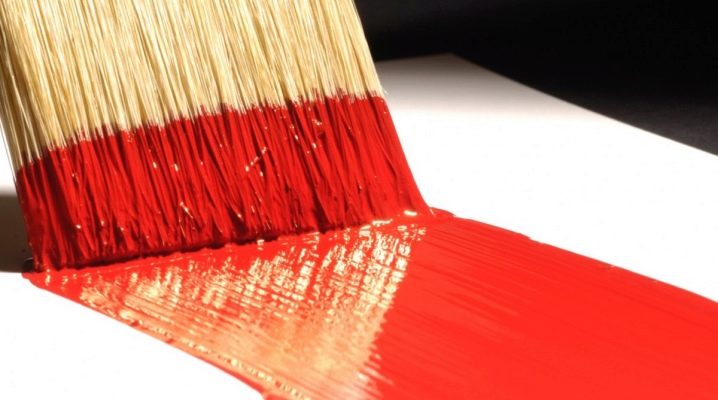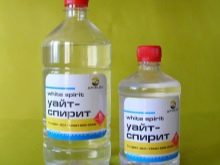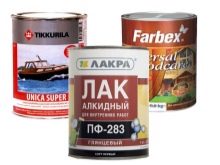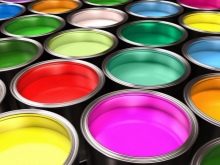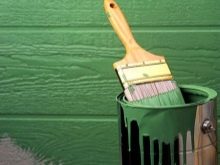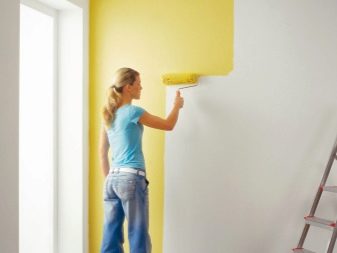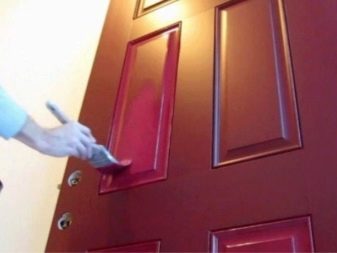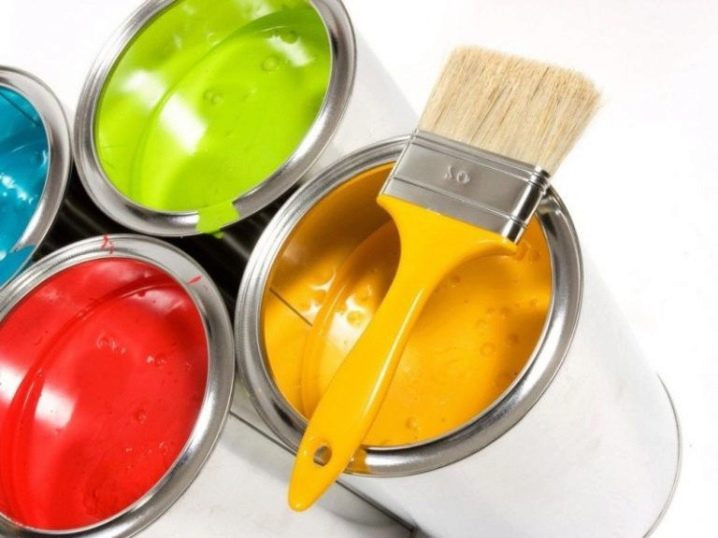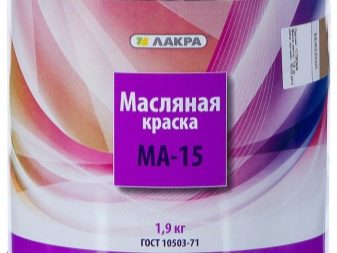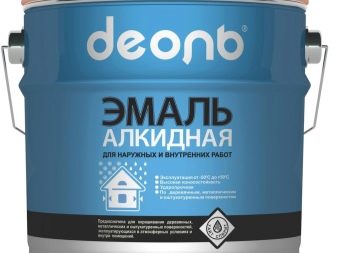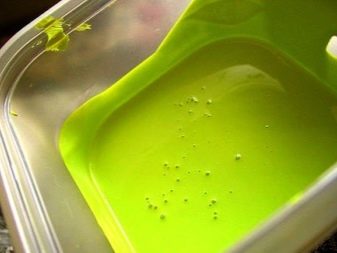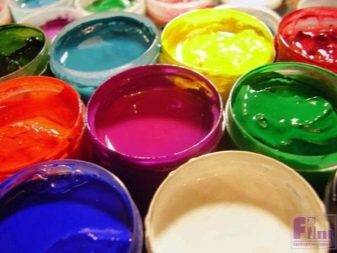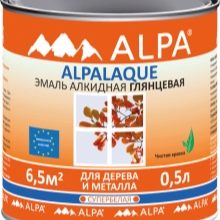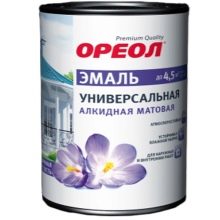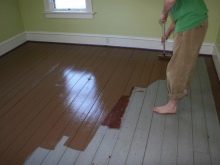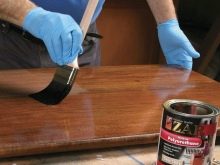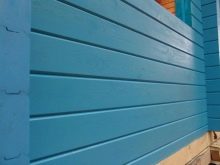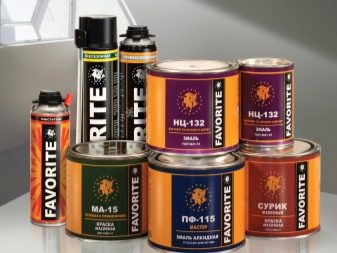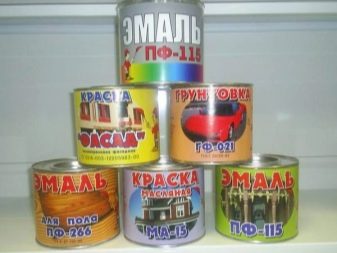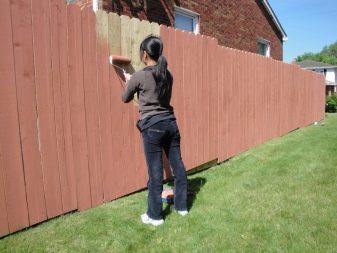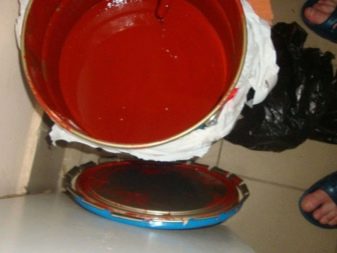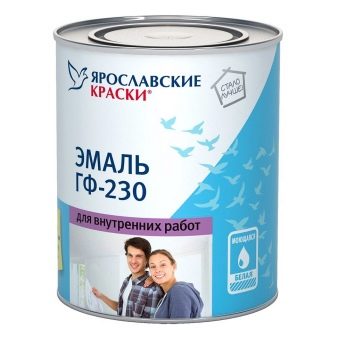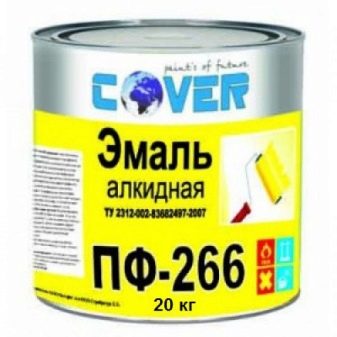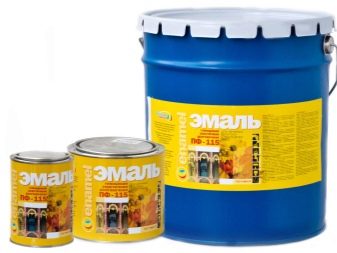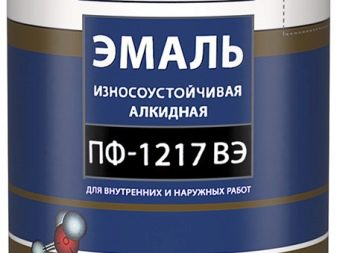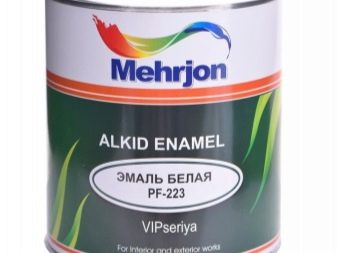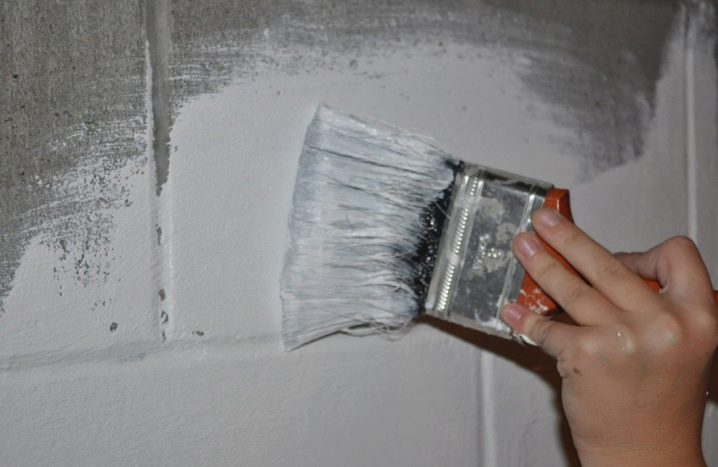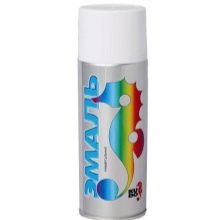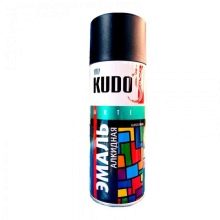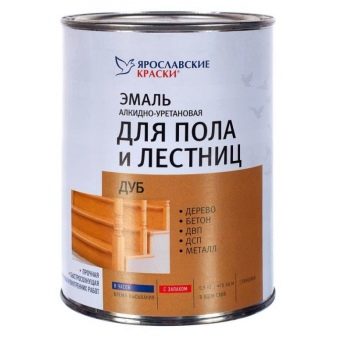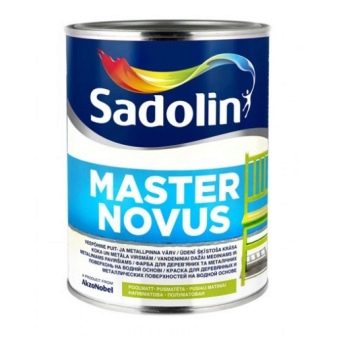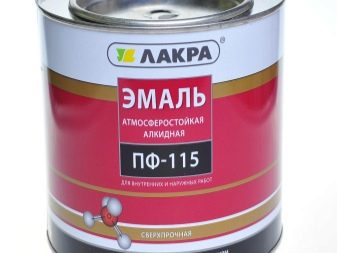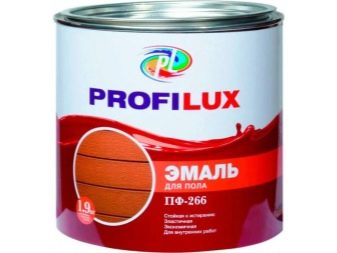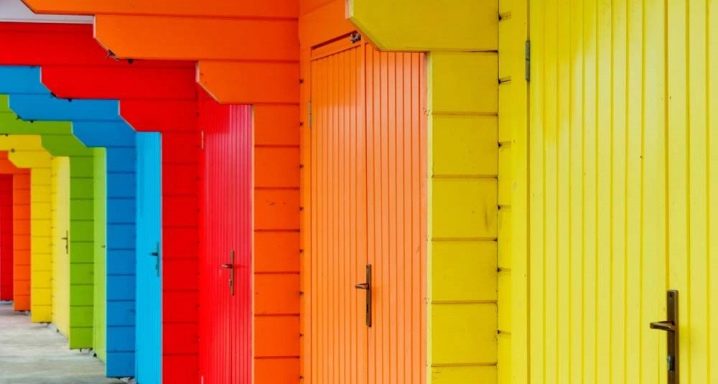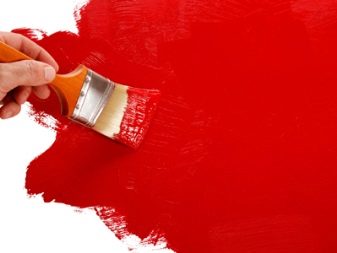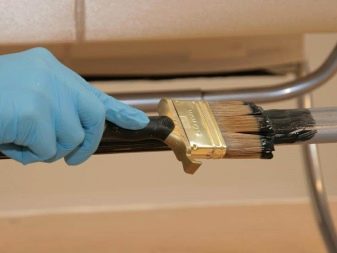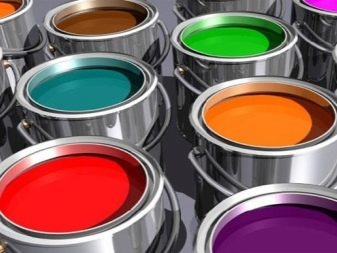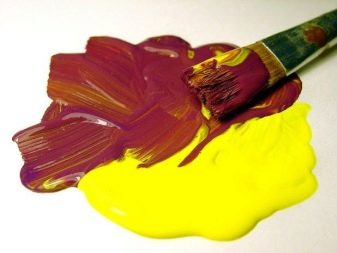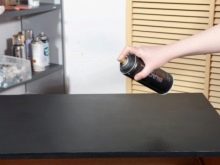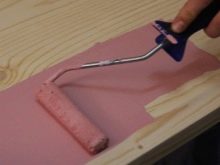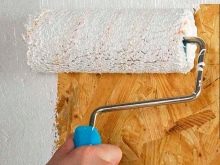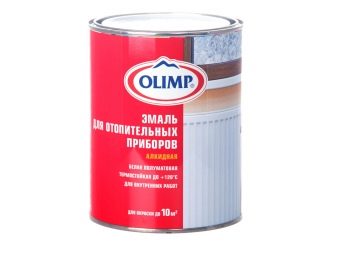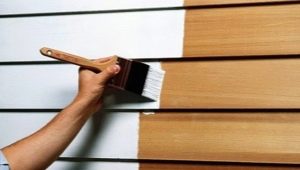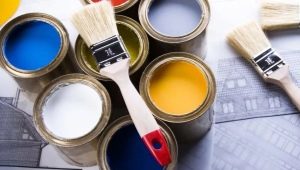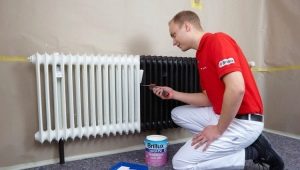Alkyd paint: pros and cons
Repair in the house does not do without use of paints and varnishes. At this point, the question is brewing about what kind of paint is better? Among the wide range of paint coatings, alkyd paint occupies a special place. What is it and what is its composition, we learn below.
Choosing finishing materials at the final stage of repair work, I want everything to be beautiful, high-quality and as natural as possible. If we talk about paints, then you should pay attention to the coatings, which contain organic solvents.
What it is?
Alkyd paint is a universal paint based on organic solvent. As a rule, refined kerosene plays its role. The composition of such paints includes alkyd varnish (glyphthalic or pentaphthalic - is used more often), many fillers (oils, sand,marble, granite chips of the smallest fraction) solvents (white spirit or turpentine) and coloring pigments, hence the wide range of colors.
The composition of the paint depends on what coatings it is intended for. If these are wooden coatings, then antiseptics are present in the composition, if metal surfaces, then the presence of anti-corrosion components is obligatory.
Special features
Alkyd paint is a special type of finishing material, it has a lot of features and a number of advantages. The name of the material speaks of its main components, which are the binder component in the paint.
The advantages of this type of paint and varnish products include:
- increased durability;
- elasticity and durability;
- no shrinkage, and therefore minimization of cracks on the painted surface;
- the possibility of using both indoors and outdoors;
- high resistance to changing temperature regimes (maintained from low subzero temperature -50 to extremely high temperatures +50);
- protective functions that paint endows painted surfaces;
- wide scope of use (wood, metal, concrete, brick, drywall and other surfaces);
- high adhesion to almost all surfaces;
- quick drying;
- ease of application;
- performs anti-corrosion and antiseptic functions;
- profitability in material consumption;
- affordable price segment.
If we talk about the shortcomings, then based on the history of paint application, they are as follows:
- increased toxicity, a strong smell of varnish, which means that alkyd paint can be harmful;
- low vapor permeability;
- fire hazard (solvents in the composition are easily flammable);
- low resistance to alkalis.
Kinds
Depending on what basis they are made, alkyd paint coatings, which surfaces are used to paint, and what type of application they are, are divided into many types.
The entire range of alkyd paint coatings is divided into two main groups:
- oil;
- enamel.
Oil coatings basically contain drying oil. If we talk about the density of colors, they can be divided into categories:
- liquid;
- pasty.
If you take into account the degree of gloss, then alkyd oil paints can be:
- matte;
- glossy;
- semi-gloss.
Matte coatings perfectly mask minor surface defects.. In apartments during finishing works, matte paints are used when painting corridors and as decorating elements in rooms.
Semi-gloss paints have high water resistance. They are perfect for painting surfaces in rooms with high humidity or those coatings that often have to be washed.
Glossy paints are used in decorating the premises.. They are easy to allocate interior details or to divide the room into zones.
Oil paints are divided into groups based on the type of linseed oil, which is part of them:
- MA-021, which has a film-forming component in the form of natural drying oil;
- MA-025 with the addition of a film former as a combination of several varieties of drying oil;
- GF-023 based on glyptal linseed oil;
- PF-024where the base is pentaphthalic drying oil.
The cost of oil paints is much lower than the cost of enamel coatings.
In this type of paintwork material, along with the advantages, there are also disadvantages:
- high toxicity;
- fire hazard;
- tendency to yellowing and fading shades;
- ability to be exposed to alkaline components.
Enamel coatings are made on the basis of varnish. They are considered universal and can be used when painting any surfaces.
Taking into account which varnish is the basis of paint, there is a division into two types:
- Glyphthalic. The peculiarity of such a paint-and-lacquer material is fast hardening, but a low degree of abrasion resistance, therefore, most often such paints are used indoors. They are also easily subject to mechanical stress. A wide range of colors glyptal paints allows you to apply them in all design directions.
The most popular paint of this type is the GF-230. It is suitable only for interior work, it can be painted ceilings and walls.
- Pentaphthalic. The most common type of alkyd enamel paint. They are water resistant and have a high degree of protection against rapid abrasion, burnout and damage. PF-115, PF-133, PF-223 and PF-253 are considered to be popular pentaphthalic enamels. PF-115 is intended for external coloring, it has a beautiful ebb. PF-133 is not very resistant, it doesn’t cover the surface very well, therefore it is better to apply it on pre-primed surfaces, it dries within a few hours.Drying time is from 10 to 24 hours.
PF-223 is suitable for painting metal and wood surfaces. It fits perfectly on the cover, without making gaps, and has a wide color gamut.
PF-253 is designed for priming wood surfaces. It is quick-drying, forming a smooth and glossy color. Apply, as a rule, in several layers.
Enamel paints can also have a glossy and matte surface. They have high durability, excellent strength and durability. Surfaces painted with alkyd enamels are not afraid of any temperature drops, be it bitter cold or heat.
However, the biggest advantage of alkyd enamels is a high degree of water resistance, allowing it to withstand high levels of humidity. Accordingly, if a thin colored layer can withstand any moisture, then the formation of fungus will not be there. Such enamel is not afraid of mechanical and alkaline effects.
Due to the elasticity of all alkyd paints and varnishes do not spread over the surface, are easy to apply and do not lose color after a long time.
In addition to the main classifications of alkyd paint products, there are a number of tools for painting surfaces that are worth paying attention to. For example, spray alkyd enamel in cans. Designed for painting primed metal and wooden substrates. Often used when painting car parts.
It has a list of properties:
- high gloss;
- air drying;
- has resistance to abrasion and mechanical damage;
- increased adhesion;
- excellent hiding power;
- resistant to changes in air temperature;
- It has the ability to use indoors and outdoors.
To change the physical properties of paints and varnishes additional components are added to them.
Given the presence or absence of certain auxiliary components, alkyd paints can be further divided into several types:
- alkyd-urethane;
- styrene.
These species have the longest service life - from five to six years. When compared with standard alkyd coatings, they serve about three years. They withstand critical temperature conditions from -60 to +60 degrees, very resistantthey are not afraid of mechanical and chemical damage, but they are long-lasting.
The classification of alkyd coloring agents is based on a certain digital code,on which it is easy to determine the specifics of the material:
- 0 - it is a primer, which in some cases is applied before painting surfaces;
- 1 - it is material for external works;
- 2 - paint for interior work;
- 3 - material designed for a short service life is most often used for marking;
- 4 - moisture resistant paints;
- 5 - coloring material used in rooms with rodents, as it has protection against insects and rodents;
- 6 - material resistant to components such as gasoline and oil;
- 7 - paint resistant to chemical attack;
- 8 - material with high heat resistance;
- 9 - paint for electrical insulation manipulations.
It is also worth knowing what the letter abbreviations on the packaging indicate:
- Gf - glyptal paint material;
- PF - pentaphthalic paint material;
- NC - nitrocellulose enamel coatings fast drying with a glossy shine;
- KO - heat-resistant and weather-resistant paints with the addition of silicon organic polymers;
- Cholesterol - anti-corrosion coatings for metal base;
- F - moisture-resistant paints that perform protective functions on the oil-phenolic basis.Ideal for painting metal surfaces.
Color solutions
The color palette of alkyd paints and varnishes is not very wide, but you can expand it using tinting. Additionally, the desired dye is purchased and mixed with the primary color, resulting in the desired shade. For unusual tones you can mix several dyes with paint.
Each type of alkyd paint has its own color range. For example, PF-223 has 17 tones, many shades of paint GF-230, ranging from milky tones and ending with all shades of brown. Color variety is different spray paint in cans.
The most popular is black, brown and white paint.
Which is better?
To understand what type of paint is better to use during repairs, you just need to compare the technical characteristics of paints and varnishes. Most often, buyers choose between alkyd and acrylic paint coatings.
So, Alkyd paints dry quickly; two days are enough for complete curing and drying.that can not be said about acrylic materials, which may take 10-30 days to complete drying. It all depends on where the acrylic coating is used and which bases are painted with it.
The service life of surfaces painted with alkyd materials is 3 years.and surfaces painted with acrylic paints will last much longer (5-8 years), and on metal substrates and plasters, the service life is 15-20 years.
An important decisive factor is the price segment, since the cost of alkyd materials is much lower than the price of acrylic coatings.
The compositions of the two types of paints are completely opposite. In one of them, acryl and water are the basis, and in the other, varnish and white spirit are based, so when choosing a specific type of coloring material, all factors and properties should be taken into account.
Tips and tricks
In order to get the maximum benefit from the finishing material, you need to clearly understand its purpose and use where it should be.
Alkyd paint is applied with a brush, roller or sprayed on the surface. Before painting, the base must be prepared in advance, cleaned of dust, dirt, roughness and previous finishing or facing materials. On average, for painting 1 m² consumes from 30 to 150 grams of material.
Before use, the paint should be properly mixed to a uniform consistency. Shaking the jar is not enough; mixing it with a wooden stick is better when opening the container with the material.
Brushes for alkyd materials need to buy from natural fibers, synthetic will not work, because they will hold the paint, reducing the degree of gloss.
For painting surfaces made of wood, for example, the floor is better to use a material with a high degree of abrasion resistance PF-253. Almost all grades of alkyd paints are suitable for painting metal products, but the usage environment should be considered. For example, to paint radiators of heating it would be right to choose PF-223. It is suitable only for internal work and is resistant to high temperatures. Before use, it must be diluted with gasoline.
Non-standard decoration of rooms can not do without the use of enamel for spraying. It is easy for her to paint small parts and paint over hard-to-reach areas. It is odorless and dries very quickly.
For dyeing doors, furniture is better to use thixotropic alkyd paints.. They are easily applied with a brush and have an attractive semi-gloss, but to avoid smudges, it is better to use a roller. This coating is not afraid of frequent washing and use of detergents.
Ordinary alkyd enamel is suitable for painting almost all bases, this is a universal coating.. It is used both indoors and outdoors. It is moisture resistant, durable and not afraid of temperature changes. Most often it is used for painting facades.
Very often, to improve the adhesion of surfaces before painting with alkyd paint, the base is primed. It also reduces the consumption of paintwork material.
Manufacturers
Manufacturers of alkyd paints and varnishes are many, but the most popular and well-established brands are Kudo and Olimp.
Kudo - These are alkyd paints and varnishes, widely used for painting parts of vehicles, tiles, surfaces of metal and wood. They are used both for interior and exterior applications. Available in aerosol cans, belong to the group of universal coatings.Possess high adhesion, durable and weatherproof, have an attractive gloss, resistance to mechanical damage.
Olimp offers a wide range of alkyd and alkyd-urethane coatings. Their line-up contains materials for painting windows, doors, concrete floors, radiators, building facades. They possess anticorrosive and antiseptic properties and are intended for use both indoors and outside. To expand the color range of paints manufacturers developed a computer tinting system.
On the cons of alkyd paints and their differences, see the following video.
